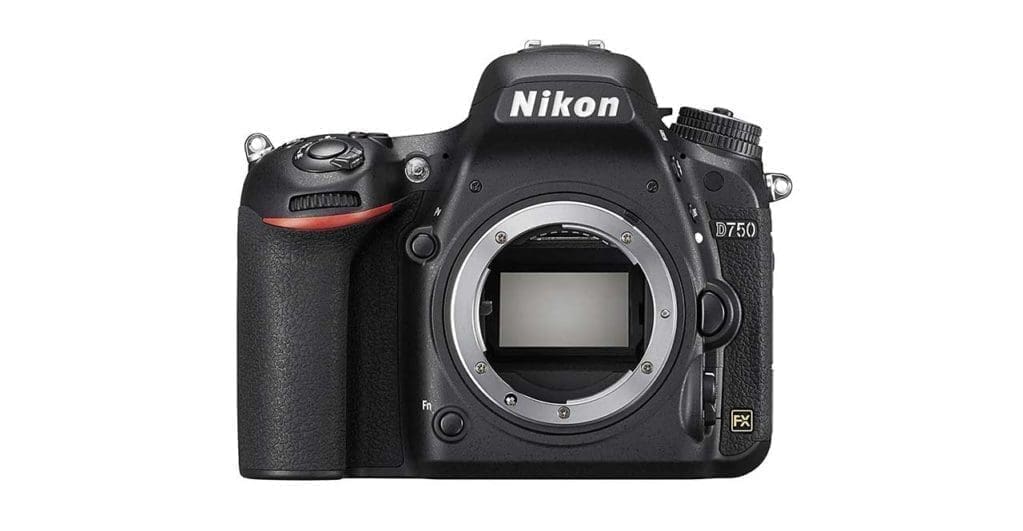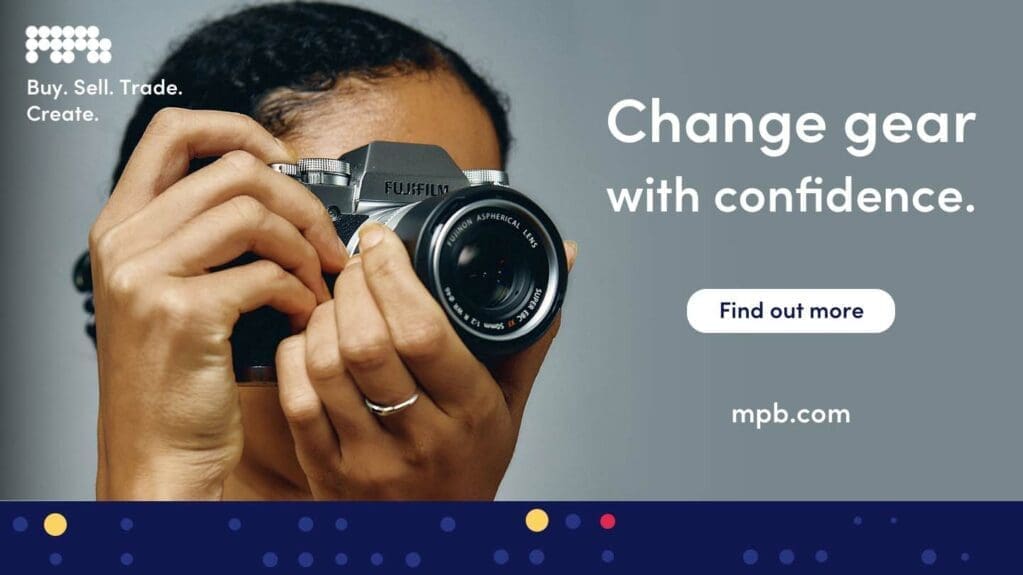At first glance the Nikon Z6 and D750 seem like vastly different cameras. One is a bulky DSLR that launched in 2014 and the other is a slim and powerful mirrorless camera that marked Nikon’s serious move into mirrorless in 2018. But is the upgrade from the Nikon D750 to the Z6 as obvious as it may seem? In this Nikon Z6 vs D750 comparison we examine the key specifications and advantages each camera offers.
Sensor
- Nikon D750: 24MP – Full frame CMOS Sensor
- Nikon Z6: 25MP – Full frame BSI-CMOS Sensor
Inside the Nikon Z6 is a full-frame (FX) 24.5-megapixel backside-illuminated (BSI) sensor that produces images with 6048×4024 pixels. This means they measure 51.2x34cm or 20.2×13.4inches at 300dpi. The Nikon D750 offers a 24.3-megapixel full-frame sensor with an anti-aliasing filter to smooth out finer details to combat moire effects.
In terms of image quality, both sensors offer about equal resolution and clarity of detail. But while the resolution of both cameras is fairly equal, the Z6 benefits from a backside-illuminated design. This novel design makes it easier for light to reach the photo diodes on the sensor. The advantages of this type of sensor design are better low-light performance and faster readout rates.
Lens Mount
- Nikon D750: Nikon F mount
- Nikon Z6: Nikon Z mount
Nikon developed the new Z mount when designing its first full-frame mirrorless cameras. The decision to move away from the long-standing F mount was no doubt momentous and allowed its engineers to make some remarkable adaptations.
The mount diameter jumps from 47mm with the F mount to 55mm with the Z mount. This allows for a lot more light to come into the camera. Whereas the F mount limits a maximum aperture to f/1.4 or f/1.2 at the very most, the new Z mount makes f/0.95 lenses feasible, which we’ve already seen roll out.
Although the diameter of the mount may have been increased significantly, the flange depth has shrunk to just 16mm. This – along with the lack of a mirror – is what enabled Nikon to make the Z6 so much smaller than the D750.
Processor
- Nikon D750: Expeed 4 processing engine
- Nikon Z6: Expeed 6 processing engine
Just like the Z7, the Nikon Z6 uses the Expeed 6 processing engine. The Nikon D750, on the other hand, uses Nikon’s older generation Expeed 4 processor. As a result, the Nikon Z6 has considerably more power than the D750.
The Nikon Z6 can achieve a maximum continuous shooting rate of up to 12fps, while the D750 tops out at 6.5fps.
Video
- Nikon D750: Full HD at up to 60p
- Nikon Z6: 4K at up to 60p (60p via firmware update)
the Z6 can record 4K UHD (3840 × 2160) video at 30p with full-frame readout. Slow-motion fans will also like the fact that Full HD footage can be recorded at up to 120p.
Footage recorded internally is in 8bit colour. However, if you connect an external recorder via the HDMI connection, it’s possible to record 10bit 4:2:2 colour with N-Log for better grading and colour matching.
Using N-Log and 10bit recording extends the tonal range to 12stop or 1,300% dynamic range. What’s more, the Z6 offers Timecode, focus peaking and zebra display modes.
The Nikon D750 can record Full HD video at up to 60fps. For its time more than half a decade ago, the D750 was a very videographer-friendly camera. These days, though, its movie capabilities have been far surpassed by many other cameras.
However, HD video is still very high quality and perfectly suitable for most situations.

Autofocus
- Nikon D750: 51-point AF
- Nikon Z6: 273-point hybrid AF system
The Nikon Z6 debuted a new hybrid autofocusing which marked a significant change from Nikon’s DSLRs. The Nikon D750 uses a dedicated phase-detection sensor for shooting with the viewfinder and contrast-detection focusing for Live View and video shooting.
The Z6’s hybrid system offers 273 AF points that cover approximately 90% of the sensor. This means you can focus on areas much closer to the edge of the frame than you can with the D750 or other Nikon DSLRs. More importantly, you no longer have to use the focus-and-recompose technique. You can also track subjects around more of the imaging frame.
Conversely, the Nikon D750 has 51 AF points around the frame, meaning you do need to use the focus-and-recompose method if you want your focal point to be in certain parts of the frame.
Screen
- Nikon D750: 3.2-inch 1,229k-dot tilting screen
- Nikon Z6: 3.2-inch 2,100k-dot tilting touchscreen
Sadly, the Nikon Z6 doesn’t have a vary-angle touchscreen LCD, which would really open it up for blogging. Instead, it retains the tilting LCD technology Nikon has used for a while now.
Both the Nikon Z6 and D750 have the same style of tilting LCD; however, the screen on the Z6 is significantly brighter, offering up to 70% more resolution.
And, crucially, the Nikon D750 lacks touchscreen functionality. This means you need to navigate manually through menus rather than with the swipe of a finger.
Viewfinder
- Nikon D750: Optical (pentaprism) viewfinder
- Nikon Z6: 0.39-inch 2,360,000-dot OLED electronic viewfinder
The viewfinders in the Nikon Z6 and D750 are quite different. The Z6 boasts a high-resolution 0.39-inch 2,360,000-dot OLED electronic viewfinder with a refresh rate of 60fps. As a result, images are smooth, even when following a moving subject. The Z6’s EVF also shows 100% of the image with 0.8x magnification.
The Nikon D750, on the other hand, has an optical pentaprism viewfinder which provides 0.7x magnification.
Stabilisation
- Nikon D750: No stabilisation
- Nikon Z6: 5-axis in-body image stabilisation
The Z6 represented many ‘firsts’ for Nikon, and another one of those was the built-in 5-axis stabilisation system that provides 5EV of shutter speed compensation.
The Nikon D750 does not have in-body image stabilisation (popularly known as IBIS) built in. However, you can purchase Nikon’s lenses that feature Vibration Reduction to help reduce camera shake.
With IBIS in the Z6 (and subsequent Z series cameras), Nikon avoids having to put its VR system in the S-line (or Nikkor Z) lenses. This will keep size, weight and prices down.
Body & Weight
- Nikon D750: 840g; 141 x 113 x 78mm
- Nikon Z6: 675g; 134 x 101 x 68mm
We’d of course expect a DSLR to outweigh a mirrorless camera, and the D750 does indeed tip the scales as heavier than the Nikon Z6. However, the weight difference isn’t as much as you’d think. At 840g, the Nikon D750 is only 165g heavier than its more modern mirrorless sibling.
The Nikon D750 is chunkier, though. It’s physical dimensions are considerably bigger, so if space is at a premium in your kit bag this is something to consider.

Should I sell my Nikon D750?
As you can see from this Nikon Z6 vs D750 comparison, there are some stark differences between the two cameras. For stills shooters, the Z6 offers better low-light performance, a much faster continuous shooting rate and a hybrid autofocus system with more AF points and Eye AF tracking.
Videographers will also appreciate the Z6’s 4K and slow motion Full HD capabilities, as well as the option to record in N-Log. In most categories in this NIkon Z6 vs D750 comparison, the mirrorless camera comes out on top. Where the D750 does currently win is on price, as it is one of the cheapest full-frame cameras you can currently buy. But in our opinion, the jump in spec that you get with the Z6 more than warrants the upgrade.
If you own a Nikon D750 and you’re considering the Z6, the answer is clear: you should sell your D750. It was a fantastic DSLR in its day – and still is great at many things – but the Nikon Z6 marks a very clear upgrade over the D750 in almost every category.
Sponsored: Thinking of selling your Nikon D750 or Nikon or other DSLR to upgrade? Get a free instant quote from MPB and find out what your kit is worth. Selling your gear to MPB is easy and secure. Plus get free doorstep pickup and super-fast payment. We’re loved and trusted by more than 250,000 visual storytellers around the world and we’re rated excellent with five stars on Trustpilot. Buy. Sell. Trade. Create.




Leave a Reply
You must be logged in to post a comment.